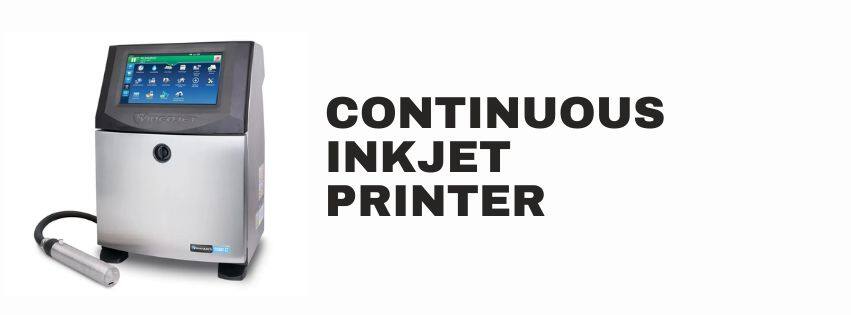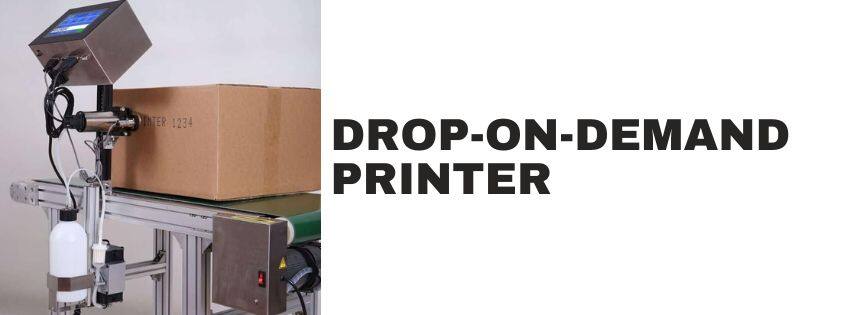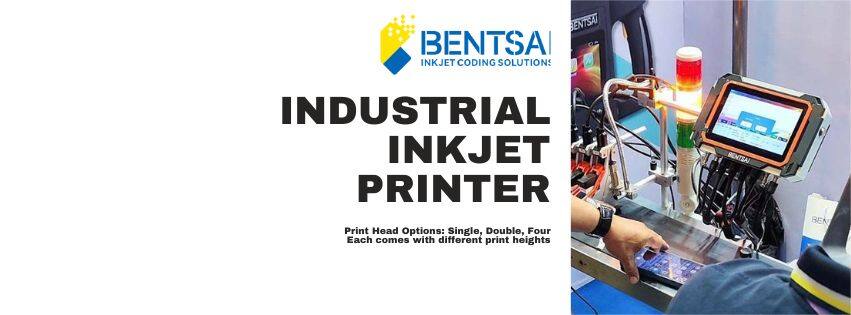How to Choose the Right One from Industrial Inkjet Printers?
In previous blog content, we've already outlined some business benefits of using industrial inkjet printers. Now you can choose the appropriate machine configuration of industrial inkjet printing equipment according to your workload and work requirements.
Factors such as cost, efficiency, and output quality play a significant role in optimizing the printing operations. Selecting the appropriate equipment not only boosts printing precision and speed but also helps manage expenses and meets your unique business needs effectively.
6 Considerations for Choosing the Right Industrial Inkjet Printer
Choosing the right industrial inkjet printer is essential for optimizing production and achieving high-quality results. To make an informed decision, evaluate these key factors: types, print speed, print quality, material compatibility, cost (including purchase price, maintenance, ink, and other consumables), etc. We will analyze each factor one by one.
1. Types
When selecting an industrial inkjet printer, understanding the different types available can help you choose the best one for your specific needs. Two of the most commonly used types in industrial settings are continuous inkjet printers and drop-on-demand printers. Each type offers distinct advantages and is suited to different applications.
Industrial Continuous Inkjet Printers
Industrial Continuous Inkjet Printers, also known as CIJ printers, are versatile printing systems widely used in various industries for high-speed marking and coding. These printers operate by ejecting tiny droplets of ink from a printhead in a continuous stream.

How It Works:
A CIJ printer works by continuously pumping pressurized ink through a nozzle, where it is broken into droplets. Selected droplets are electrically charged and deflected by an electric field to land precisely on the printing surface, while unused droplets are recirculated. This allows high-speed, non-contact printing on various surfaces and materials.
Applications:
- Food & Beverage: Expiry dates, batch codes, and barcodes on packaging.
- Pharmaceuticals: Precise labeling on bottles and boxes.
- Automotive: Marking parts with serial numbers.
- Electronics: Coding on circuit boards and cables.
Pros of CIJ printers:
- High Speed: High-speed printing, perfect for high-volume production.
- Versatile Use: Can print on any substrates.
- Low Ink Cost: Ink expense is much lower than TIJ printers.
- Durable Ink: Ink is scratch-resistant and waterproof, suited for harsh environments.
Cons of CIJ printers:
- High Initial Investment: The machine is more expensive than the DOD printers.
- Limited Print Resolution: Print resolution is around only 100 DPI while others have 300 to 600 or even higher DPI.
- High Maintenance Costs: Due to complex parts, if the machine becomes faulty, it will cost a lot to maintain and repair.
Industrial Drop On Demand Inkjet Printers
Drop-On-Demand printers (DOD Printers) are specialized printing systems that release ink droplets only when needed, ensuring precision and reducing waste. Drop-on-Demand printers, including thermal inkjet (TIJ) and piezoelectric inkjet (PIJ) models, provide advanced inkjet technology with precise ink droplet control for high-resolution printing and efficient ink use.


How It Works:
A Drop-On-Demand (DOD) printer works by ejecting ink droplets only when needed, rather than continuously. Ink is stored in chambers within the printhead, and when printing is required, either thermal or piezoelectric technology is used to force a droplet of ink through the nozzle onto the substrate. This precise droplet control allows for high-quality printing with minimal ink waste, making DOD printers ideal for detailed and high-resolution applications.
Applications:
- Product Labeling: High-resolution text, batch number, picture printing for clear and detailed labels.
- Flexible Packaging: Printing on a variety of flexible packaging materials.
- Barcode and QR Codes: High-detail printing for accurate and scannable codes.
Pros of DOD printers:
- High Print Resolution: Prints 300 DPI to 600 DPI or even higher resolution text and graphics.
- Flexible Print Height: Compared to CIJ printers that mostly have only 0.5-inch print height, DOD printers have more size options including 1 inch, 2 inches, and even 4 inches.
- Ease of Operation: The interface is straightforward and requires minimal training before use.
- Versatile Use: Can print on any substrates.
Cons of DOD printers:
- High Printing Costs: Ink expense is more expensive than CIJ printers.
- Slower Print Speed: Compared to CIJ printers, print speed could be slower.
2. Printing Speed
Printing speed impacts industrial efficiency. Balance print speed between your budget to make sure you select an ideal machine that aligns with your business needs effectively.
3. Printing Quality
Consider printing quality to ensure it meets your resolution and detail requirements, which is essential for achieving sharp, accurate, and high-quality results for your specific applications.
4. Substrate Compatibility
Choosing an industrial inkjet printer involves considering material compatibility. Some printers use only water-based inks for porous materials, while others handle a variety of inks, including UV and solvent-based, for different surfaces. Selecting the right printer ensures it meets your specific substrate needs and delivers high-quality results.
5. Cost
Cost considerations are influenced by multiple factors, such as the types of printer, initial investment, printing cost, maintenance requirements, and the specific application environment. Balance your printing needs with your budget to help you make an informed decision.
6. Printing Environment
- Temperature and Humidity: Inkjet printers are sensitive to environmental conditions. Ensure the printer operates effectively within the temperature and humidity ranges of your facility. Extreme conditions can affect ink performance and print quality.
- Dust and Contaminants: Environments with high dust or contaminants can clog nozzles and degrade print quality. Choose a printer with good sealing and filtration options to minimize the impact of dust and debris.

Conclusion
Making a commitment to a suitable printer for your business requires careful consideration of several factors, including the printer type, machine printing speed, print quality, substrate compatibility, and overall cost. Each of these elements plays a crucial role in ensuring that the printer meets your specific production needs while also offering long-term value. If you are considering purchasing industrial inkjet printing equipment, BENTSAI inkjet printers are an excellent choice. They offer a balance of high performance, versatility, and cost-effectiveness, making them suitable for a wide range of industrial applications. Now, please consider the above 6 factors and start choosing the best industrial printing equipment for your business!
Ask Question
No questions and answers

